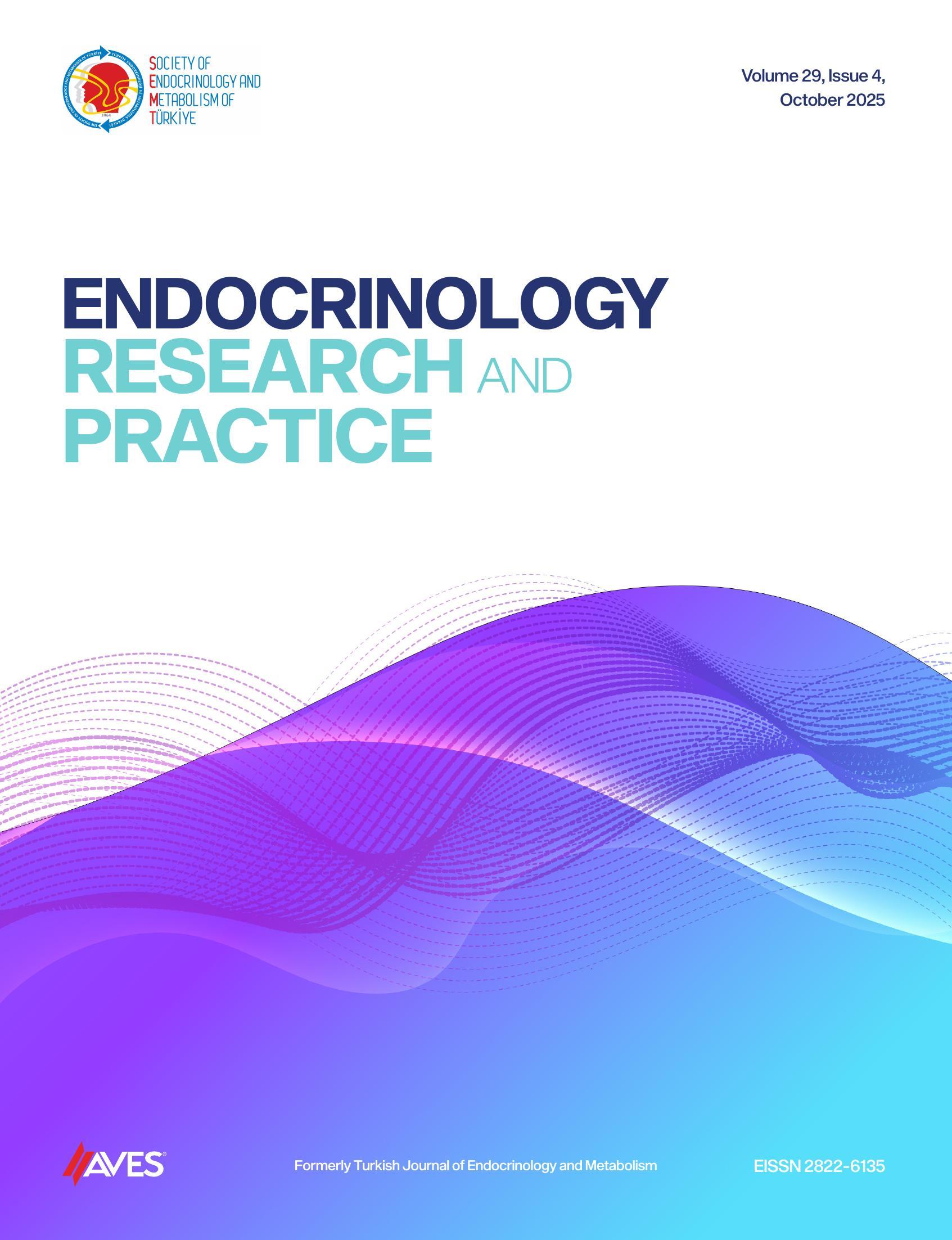Abstract
Objective: To assess visceral adiposity index (VAI) as a sign of cardio-vascular diseases (CVD) in patients with overt or subclinical hypothyroidism.
Materials and Methods: Sixty-eight patients with hypothyroidism (29 with overt and 39 with subclinical hypothyroidism) and 33 age- and gender-matched control patients were included. VAI levels were calculated with the following formula: (waist circumference (WC)/[36.58+(1.89xbody mass index (BMI))])x[(triglyceride (TG) (mmol/L)/0.81)x (1.52xhigh-density lipoprotein cholesterol (HDL-cholesterol) (mmol/L))] and (WC/[39.68+(1.88xBMI)])x[(TG (mmol/L)/ 1.03)x(1.31xHDL-cholesterol (mmol/L))], respectively.
Results: While body weight (p<0.01), BMI (p<0.01), TG and VAI levels (p<0.01) were higher in patients with hypothyroidism than controls. HDL-cholesterol levels were lower (p=0.02) (Table 1). When patients were divided to groups as subclinical (n=39) and overt hypothyroidism (n=29) and compared with each other and controls (n=33) (Table 2), body weight (p=0.02 and p=0.02, respectively), BMI (p=0.01 and p<0.01, respectively) and TG (p<0.01 and p=0.03, respectively) were higher in overt and subclinical hypothyroidism groups than controls. HDL-cholesterol was lower only in the group with overt hypothyroidism than controls (p=0.01). Although found similar to each other in overt and subclinical hypothyroidism groups. VAI levels were observed to be higher in both groups than controls (p<0.01 and p=0.02, respectively). In correlation analysis, a positive correlation was determined between thyroid stimulating hormone (TSH), BMI and VAI levels (p=0.03 and p<0.01, respectively).
Conclusions: Due to the association between increased VAI levels and CVDs, we consider that several measures should be promptly taken to decrease these risk factors in patients with hypothyroidism.

-1(1).png)

.png)